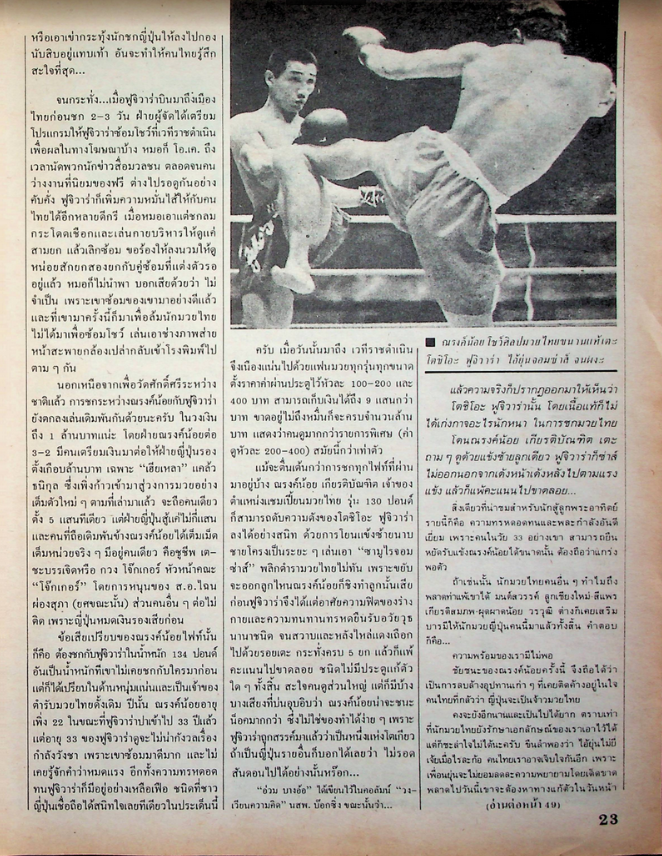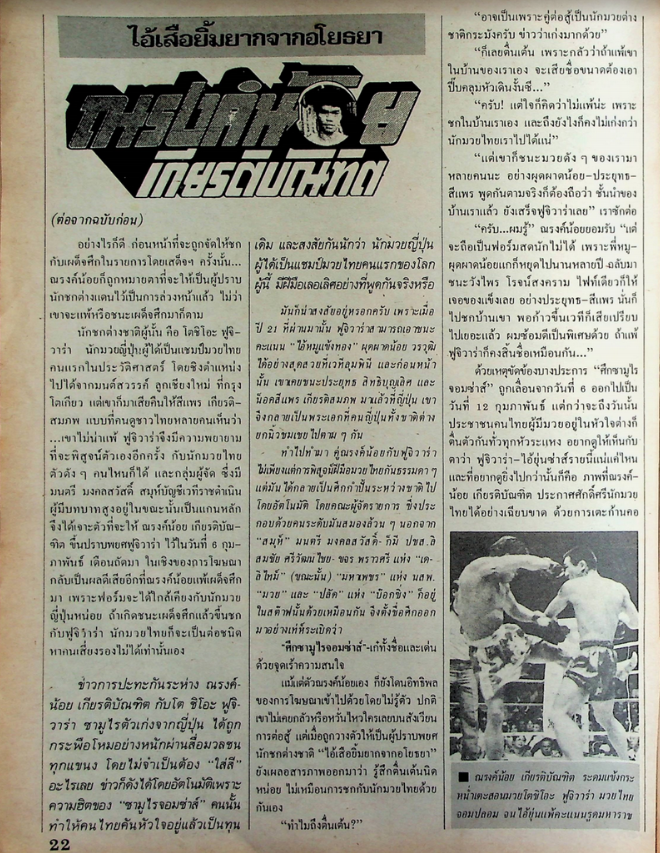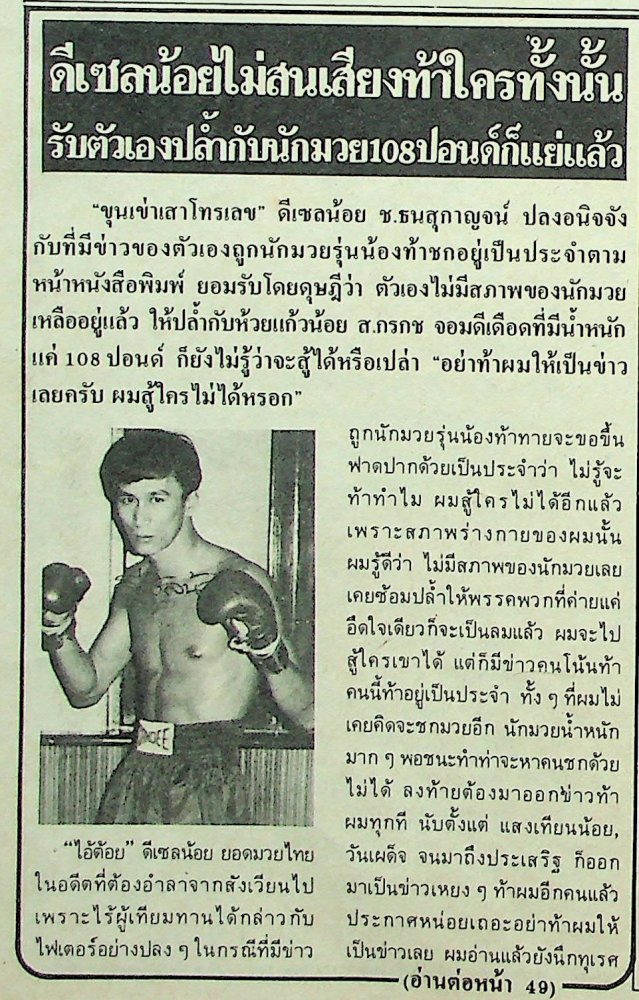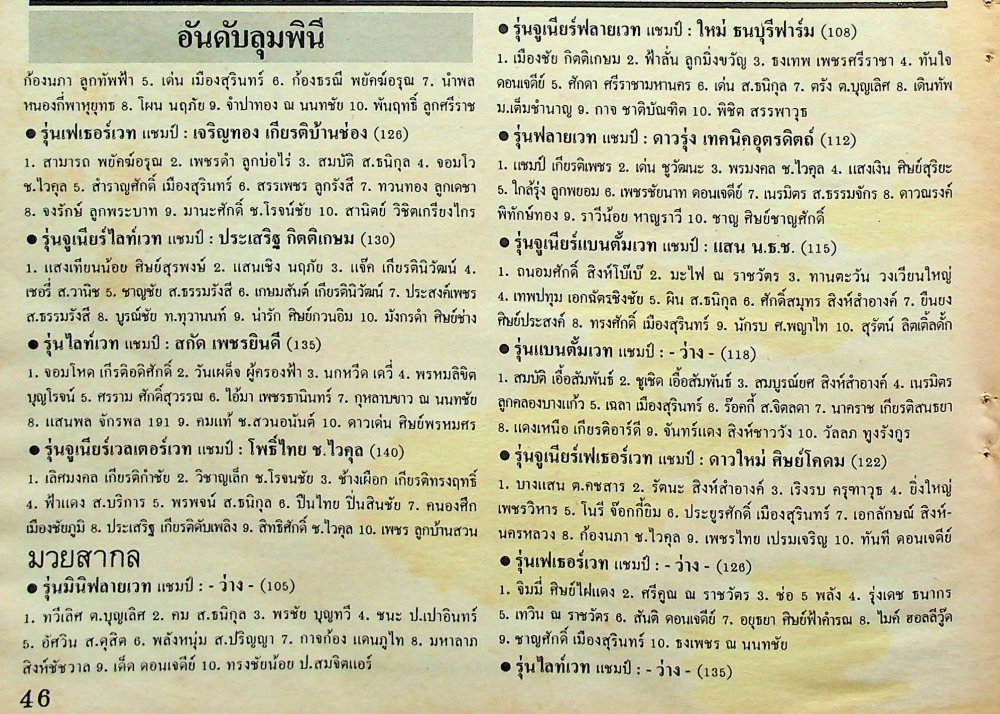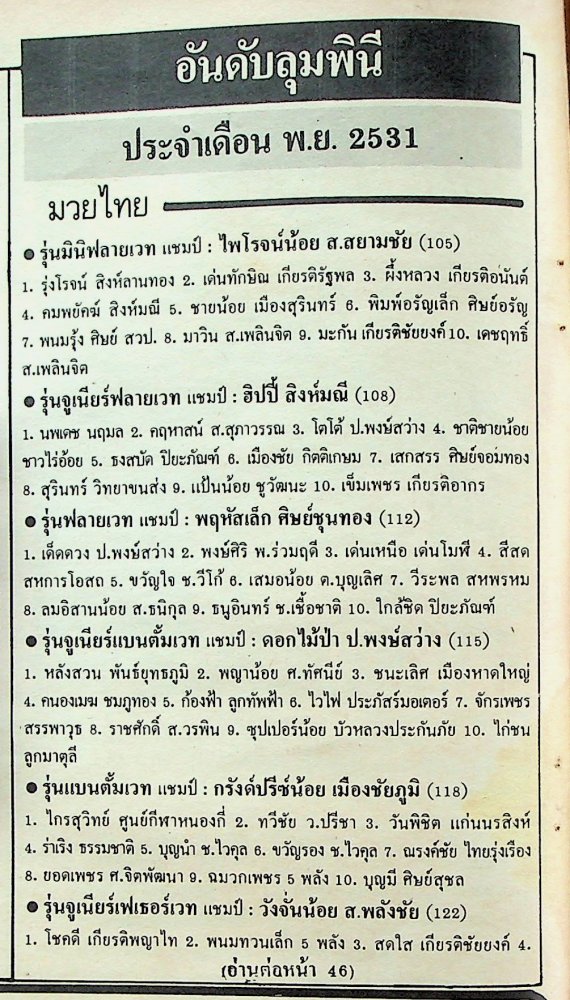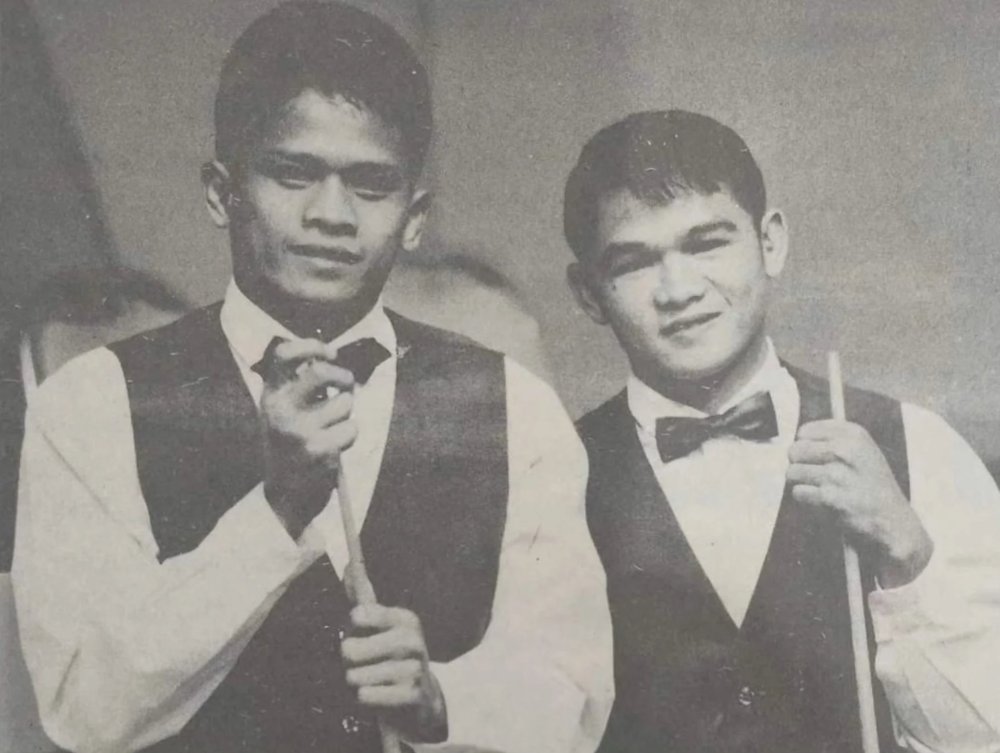Leaderboard
Popular Content
Showing content with the highest reputation on 07/25/2024 in all areas
-
Hello all! Just like other users, I am looking at Sit Thailand, Manop, and Hongthong. I’ll be in Thailand for a 4 week training camp. Totally skippable background info: I learned about Muay Thai when I was a Peace Corps Thailand volunteer and now have racked up more than a dozen fights in about 2 years back stateside. I wouldn’t describe myself as highly skilled; just relentless. I plan to move to Thailand indefinitely but for now, I have a couple of opportunities coming up and may be fighting some VERY accomplished women (I fight at 118) and so I’m taking the opportunity to for a camp. Does anybody have suggestions with the following info in mind? •I’m female, fighting 118 •this is a camp for a specific fight •I don’t have an unlimited budget (which is why I’m not going to Kem haha); I’ve just been saving for years •I want to spar and clinch a lot •I like smaller more intimate training and really want to work on my technique •I’m not skilled enough to attribute myself with a certain style, but I would say I lean muay khao in my forwardness and love for clinch. My fight IQ is… coming along lol Hong Thong looks awesome, and I do like that it’s close to the center. I love their enthusiasm and there would be more sparring partners for me, I imagine, as it seems a bit larger, and I love the on site accommodation. I won’t be able to rent a bike. (I do speak Thai though so I’m not at all worried about navigating public transport and asking for help.) Manop sounds like a rad teacher, and he trains probably one of the the best women in the world at my weight, but I don’t even know if I’d get to spar her Sit… I just keep hearing good things! Thanks so much; I welcome any suggestions, and while I’m excited to be in the north (I lived in Korat so that’s why I was thinking Kem initially) I am open to other suggestions.1 point
-
Narongnoi Fujiwara - Fighter Feb 20, 1987.pdf above, the higher res PDF Maybe someone could (machine?) translate the article and post it. Just adding the article here for archive purposes. A long history of Japanese fighters pursuing the glory of Thai ring fighting excellence, this was a milestone fight in Thailand. Fujiwara would end up with a curious career record boasting an enormous number of knockouts mostly fighting in Japan. In March of 1978, not even a year before this fight, he had won the Rajadamnern title, fighting in Japan (a knockout somewhat by tackle). Would be interesting to read this piece to see how Thai media looked back on the Narongnoi fight almost a decade after.1 point
-
Translation: (Continued from the previous edition (page?) … However, before being matched against Phadejsuk in the Royal Boxing program for His Majesty [Rama IX], The two had faced each other once before [in 1979]. At that time, a foreign boxer had already been booked to face Narongnoi, and the fight would happen regardless of who wins the fight between Narongnoi and Phadejsuk. … That foreign boxer was Toshio Fujiwara, a Japanese boxer who became a Muay Thai champion, the first foreign champion. He took the title from Monsawan Lukchiangmai in Tokyo, then he came to Thailand to defend the title against Sripae Kiatsompop and lost in a way that many Thai viewers saw that he shouldn’t have lost(?). Fujiwara therefore tried to prove himself again with any famous Nak Muay available. Mr. Montree Mongkolsawat, a promoter at Rajadamnern Stadium, decided to have Narongnoi Kiatbandit defeat the reckless Fujiwara on February 6, the following month. It was good then that Narongnoi had lost to Phadejsuk as it made him closer in form to the Japanese boxer. If he had beaten Phadejsuk, it would have been a lopsided matchup. The news of the clash between Narongnoi and Toshio Fujiawara, the great Samurai from Japan had been spread heavily through the media without any embellishments. The fight was naturally popular as the hit/punch(?) of that spirited Samurai made the hearts of Thai people itch(?). Is the first foreign Champion as skilled as they say? It was still up to debate as Fujiwara had defeated “The Golden Leg” Pudpadnoi Worawut by points beautifully at Lumpinee Stadium in 1978, and before that, he had already defeated Prayut Sittibunlert and knocked out Sripae Kaitsompop in Japan, so he became a hero that Japanese people admired, receiving compliments from fans one after another(?). Thus the fight became more than just about skills. It was (advertised as?) a battle between nations by the organizing team, consisting of promoter Montree Mongkolsawat, Somchai Sriwattanachai representing the “Daily Times(?),” Mahapet of “Muay Thai” magazine, and Palad of “Boxing” magazine were also present, and they named the show in a very cool(?) way, “The Battle of the Fierce Samurai.” Even “The Smiling Tiger of Ayothaya” Narongnoi who was never afraid or shaken was affected by the advertising, confessing to the media that he felt a little scared, unlike usual when he faced other Thai boxers like himself. “Why are you scared?” “Maybe because the opponent is a foreigner. There’s news that he is very talented.” “So you’re afraid that if you lose to him in our own home, it will give us a bad name and be very shameful for you.” “Yes! But my heart knows that I can’t lose because I am fighting in my own country. And in any case, he probably won’t/wouldn’t be better than our boxers. “But he has defeated many of our famous boxers such as Pudpadnoi-Prayut-Sripae. To tell the truth, he must be considered a top boxer in our country.” “Yes, I know” Narongnoi admitted, “but Pudpadnoi could not be considered to be in fresh form as he had been declining for many years and could only defeat Wangprai Rotchanasongkram the fight before(?). [Fujiwara] fought Prayut and Sripae in Japan. Once they stepped on stage there, they were already at a huge disadvantage. I trained especially well for this fight, so if I lose to Fujiwara, my name will be gone(?) as well.” “The Battle of the Fierce Samurai” was postponed from February 6 to February 12, but Thai boxing fans were still very excited about this matchup, wanting to see with their own eyes how good the spirited Japanese boxer was, and wanted to see Narongnoi declare the dignity(?) of Thai boxers decisively with a neck kick, or fold the Japanese fighter with a knee. Win in a way that will make Thai people feel satisfied. [Photo description] Narongnoi Kiatbandit used his strength to attack Fujiwara, a fake Muay Thai fighter until Fujiwara lost on points. Fujiwara flew to Bangkok 2-3 days before the fight. The organizers of the show had prepared an open workout for him at Rajadamnern Stadium for advertising purposes. Many press reporters and boxing fans crowded together to see Fujiwara. Their annoyance increased as all he did for three rounds was punch the air [shadowboxing], jump rope, and warm up with physical exercises. After finishing the first three rounds, he was asked to put on gloves and do two rounds of sparring with a person who was already dressed and waiting. However, Fujiwara’s doctor told him that it was unnecessary. This time he had come to defeat a Thai boxer, not to perform for the show. Photographers shook their heads and carried their empty cameras back to their printing houses, one after another. In addition to measuring the prestige of the two nations, the fight between Narongnoi and Fujiwara was also wagered on, with a budget of 1 million baht. Narongnoi was at 3-2 in odds, and someone had prepared money to bet on the Japanese underdog, almost a million baht. Only “Hia Lao” Klaew Thanikul, who had just entered the boxing world, would bet 500,000 baht alone, and the Japanese side would only bet a few hundred thousand. The only person who truly bet on Narongnoi’s side was Chu Chiap Te-Chabanjerd or Kwang Joker, the leader of the “Joker” group, supported by Sgt. Chai Phongsupa. The others could not bet because the Japanese side ran out of money to bet on. Narongnoi’s disadvantage would be that it would be the first time that he will fight at 134 lbs. However, he would have youth and strength on his side, as well as having trained Muay Thai in Thailand(?). Narongnoi was only 22 years old, while Fujiwara was already 33. His 33 years did not seem to be a concern in terms of strength as he had trained very well and never knew the word “exhaustion.” Fujiwara had an abundance of endurance, to the extent that the Japanese could trust him completely on this issue. Yes [krap], when the day came, Rajadamnern Stadium was packed with boxing fans of all ages. The entrance fee was set at 100-200 and 400 baht per person, and the total raised was over 900,000 baht, less than ten thousand baht short of reaching the million baht mark. This means that the number of viewers was more than double that of the special events (200-400 baht per person) nowadays. Even though it was more exciting than any other fight in the past, Narongnoi Kiatbandit, the 130 lbs champion, was able to completely extinguish Toshio Fujiwara by throwing his left leg to the ribs every now and then. This made “the Samurai” unable to turn the odds(?) in time because Narongnoi would always stifle him. Fujiwara could only rely on his physical fitness and endurance to stand and receive various strikes until his back and shoulders were red with kick marks. After 5 rounds, he lost by a landslide, with no chance to fight back at all. Most of the audience was pleased, but there were some who complained that Narongnoi should have won by knockout, which was not easy as Fujiwara had already established that he was the best in Tokyo. If it were any other Japanese boxer, it would be certain that he would not have survived. “Am BangOr” wrote in the “Circle of Thoughts" column(?) of the boxing newspaper at that time: “Then the truth came out to show that Toshio Fujiwara was not really that good at Muay Thai. He was beaten by Narongnoi Kiatbandit who only used his left leg. Fujiwara was frozen, bouncing back and forth with the force of his leg, and he lost by a landslide... The only thing worth admiring about this Sun Warrior is his endurance and excellent durability. For someone at the age of 33 like him to be able to stand and take Narongnoi's kicks like that, he must be considered quite strong. Why, then, did other Thai boxers lose to him? Monsawan-Sriprae-Pudpadnoi-Worawut have all helped strengthen this Japanese boxer. The answer is that their readiness was not enough(?). This victory of Narongnoi is considered to be the erasing of the old beliefs that were stuck in the hearts of Thais who were afraid that Japan would become the master of Thai boxing. It will probably be a long time and it will be difficult as long as Thai boxers can maintain our identity. But we cannot be complacent. If we are arrogant and think that the Japanese will not give up, we Thais may be hurt again because they will not give up. If we make a mistake today, he will have to find a way to make up for it tomorrow."1 point
-
Sylvie is collecting old Muay Siam and Fighter magazines, reading and studying them. She puts up some of what she finds (archiving articles in high quality JPEGs and PDFs) on the Muay Thai Library Instagram, but this sub forum is where we can post those archives much more thoroughly, and where others can also drop in articles and help with translation or commentary.1 point
-
Quick summary (maybe others can contribute). With fighters like Sangtiennoi and Wanpadej fighting bigger there seems speculation that Dieselnoi could come back and fight after almost 3 years off. He says he would but that though he trains and is conditioned his skills have declined and even struggles clinching in training vs Hapalang's 108 lb Huaygaewnoi Sor. Karakod. This article comes out just after the owner of his gym Ngu (Ngao) Hapalang was assassinated at the ring in Lumpinee between rounds in the Chamuakpet vs Langsuan fight (a month before their rematch). The gym must have been in terrible turmoil. Also, this is the month before his good friend Samart returns to the ring during his FOTY comeback run, after a 4 month rest, to face Samransak. Yodthong had said that Samart had a hand fracture he was going to not get surgery for at the time. So,speculating (?) one imagines that Dieselnoi & Samart are out partying a bit, Samart (famously a reluctant trainer at the time) not fully on board with the comeback (?), and Dieselnoi being interviewed about coming back. Just some possible context setting, we'd have to ask him. The story about him struggling in clinch vs Huaygaewnoi in training is also interesting, though sounds extreme. Clinch is a very fast-eroding skill, perhaps the fastest eroding of all Muay Thai skills, and Dieselnoi in the very clinch heavy gym wasn't especially renown for his clinch skills by comparison. He told us that Chamuakpet would trip him all the time, and Chamuakpet has said it wasn't a Dieselnoi strength (when compared to him and Panomtuanlek, where were legends of clinch). Dieselnoi was more of a neck-blumb and kill knee fighter, so he really relied on that double collar lock to finish opponents. If it wasn't sharpened he might struggle?1 point
-
Well, this is really interesting. We sent this little stub article to Dieselnoi and he said the whole thing is just made up (and that writers back then would make up a lot of things). He'd never seen this, and its very, very far from the truth. He mentioned that 2 years after retirement he went to help out Wanpadej in clinch (one of the fighters mentioned in the article) and Wanpadej definitely could not stand up to him at the time. And none of the other fighters mentioned as well. As to the 108 lb Hapalang fighter that he appears to praise here, he had a fight coming up in this magazine, so maybe this was a way of hyping him? In any case, even turning to the articles of the day there might be an entire additional layer of suspicion or interpretation necessary. Magazines themselves creating their own narratives.1 point
-
Of note in the end of 1988 rankings, Somrak was ranked at #6 at 105 lb. Hippy was champion at 108 lb, Karuhat was ranked #2 at 108 at the same time that Wangchannoi had just become 122 lb champion. Karuhat does not get enough credit for how much he fought up in size. He didn't still weigh 108 when he became 122 lb champion, but he was properly a 115 lb fighter when he did. Wangchannoi and Karuhat are one year apart in age, they are just differently sized men. Rankings continued: of note, Jaroenthong was champion at 126 lb while Samart was ranked #1 behind him. And Sagat was 135 lb champion, with Gulapkaw (now head trainer at Jitmuangnon) was ranked #7 (he would later become champion).1 point
-
Here is the fight vs Wangchannoi in January of 1994 Karuhat felt he won, on which the 1993 FOTY lay...Karuhat desperately wanted a quick rematch to get revenge, but Wangchannoi begged off, and wouldn't face him until after the FOTY was announced. Karuhat instead defended his Lumpinee belt vs Boonlai and then Chatchai.1 point
-
My favorite photo illustrating this is them with their bowties at the pool hall. While Karuhat was fighting for the 1993 FOTY award at 122, defending his belt vs a monster roster of 122ers, an award he would lose to Wangchannoi (due to a razor close fight he felt he won in January of 1994), he was just a smaller sized person.1 point
-
Yea, I think it just takes time to master this. You want to beat the guy your fighting and sparring but at the same time stay relaxed but it's that thought of 'i've gotta go harder than this guy' and you just go into feral mode and tire yourself out.1 point
Footer title
This content can be configured within your theme settings in your ACP. You can add any HTML including images, paragraphs and lists.
Footer title
This content can be configured within your theme settings in your ACP. You can add any HTML including images, paragraphs and lists.
Footer title
This content can be configured within your theme settings in your ACP. You can add any HTML including images, paragraphs and lists.

